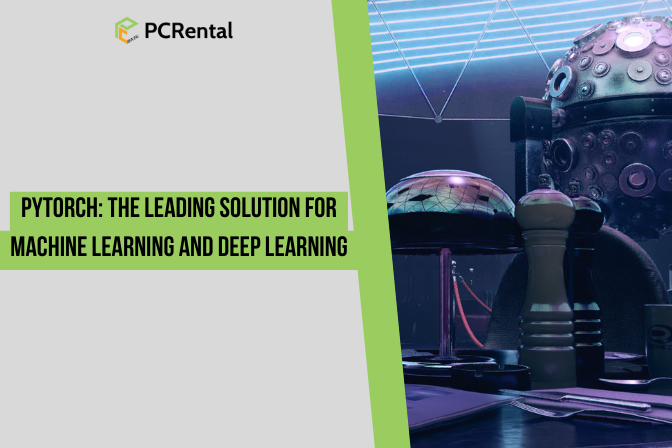PyTorch is one of the most popular open-source frameworks based on Python for machine learning. Developed by Facebook, PyTorch has quickly become a top choice in the research and industry communities due to its flexibility and powerful processing capabilities. On GitHub, PyTorch’s source code has garnered over 72.3k stars, showcasing its appeal to developers and researchers alike.
PyTorch is designed to offer high flexibility and optimal speed for deploying deep neural networks. One of PyTorch’s standout features is its use of dynamic computation graphs. Unlike static computational graphs, like those used in TensorFlow where the graph is defined before runtime, PyTorch allows the graph to be built “on the fly” during computation, making model development and experimentation much more flexible.
Why Should You Learn PyTorch?
1. Ease of Use
PyTorch offers a user-friendly and intuitive interface, making it easier to understand and implement complex deep learning models. Its dynamic computational graph not only allows for flexible model development but also makes debugging and testing simpler.
2. Pythonic Syntax
PyTorch is built on Python, a widely used and versatile programming language. If you are already familiar with Python, you’ll find getting started with PyTorch easier, leveraging your existing Python knowledge to develop deep learning models.
3. Strong Community and Rich Ecosystem
PyTorch has a vibrant and active community of developers, researchers, and enthusiasts. This community offers support through forums, tutorials, and an extensive library ecosystem. PyTorch’s ecosystem is continually expanding with a wide variety of pre-trained models, tools, and resources.
4. Research-Oriented
PyTorch has become a popular choice in the research community due to its flexibility and high customizability. Many cutting-edge models and leading research papers are implemented using PyTorch, making it an ideal choice for those interested in exploring the latest techniques in AI and machine learning.
5. Comprehensive Deep Learning Capabilities
PyTorch provides a rich set of tools for building and training deep neural networks. It supports various layers, activation functions, loss functions, and optimization algorithms, allowing you to design and experiment with complex model architectures.
6. Diverse Deployment Options
PyTorch integrates seamlessly with other popular frameworks, such as ONNX and TensorFlow, allowing you to easily deploy trained models across multiple platforms and devices.
7. Easy Debugging
PyTorch is deeply integrated with Python, so you can use Python’s debugging tools, such as pdb and ipdb, to easily debug PyTorch code. PyCharm’s debugger also works smoothly with PyTorch, helping you quickly identify and fix issues.
8. Used by Major Companies
PyTorch is used by some of the world’s leading technology companies, including OpenAI (creators of GPT-3), Microsoft, Amazon, Tesla, Meta (Facebook and Instagram), Airbnb, Apple, and many others. Tesla’s Autopilot self-driving system’s image recognition algorithms are built with PyTorch. The translation, speech-to-text, content curation, and voice recognition algorithms inside Facebook and Instagram were also developed using PyTorch.
9. Built-In Accelerated Computing
Machine learning requires large-scale matrix computations, which demand significant computing power. PyTorch supports accelerated computing on devices like GPUs and TPUs right out of the box, allowing you to run machine learning experiments faster, discover issues sooner, and find optimal solutions more quickly.
10. Extensive Integration with Other Machine Learning Libraries
PyTorch was originally developed at Facebook to process the vast amounts of data the company obtained and support its targeted advertising platform. In 2017, PyTorch was open-sourced, allowing engineers and researchers worldwide to contribute and further develop it. Today, the PyTorch ecosystem benefits from contributions from a wide range of industries and fields.
Conclusion
PyTorch is a powerful and flexible library for deep learning, offering the perfect balance between flexibility and ease of use. Learning PyTorch can open up many opportunities for building and deploying state-of-the-art machine learning models.
So, how do you get started with PyTorch? PyTorch runs on most computing systems today (Linux, Windows, Mac). You can rent affordable GPU servers at PC Rental, where we provide powerful physical workstations that make it easy to install, learn, and apply PyTorch in your projects. Contact us to get started today!




